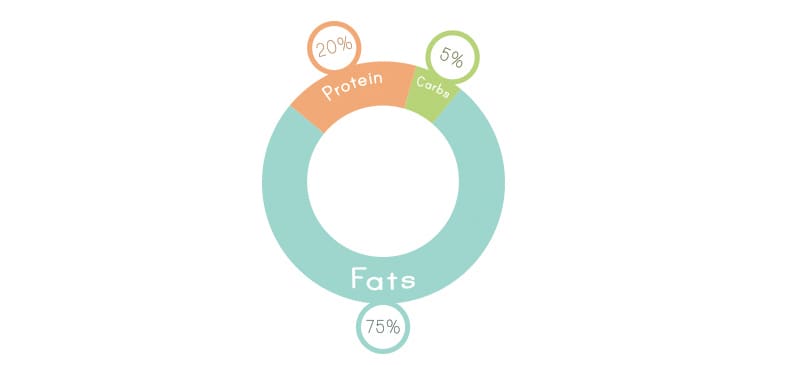This Dr. Axe content is medically reviewed or fact checked to ensure factually accurate information.
With strict editorial sourcing guidelines, we only link to academic research institutions, reputable media sites and, when research is available, medically peer-reviewed studies. Note that the numbers in parentheses (1, 2, etc.) are clickable links to these studies.
The information in our articles is NOT intended to replace a one-on-one relationship with a qualified health care professional and is not intended as medical advice.
This article is based on scientific evidence, written by experts and fact checked by our trained editorial staff. Note that the numbers in parentheses (1, 2, etc.) are clickable links to medically peer-reviewed studies.
Our team includes licensed nutritionists and dietitians, certified health education specialists, as well as certified strength and conditioning specialists, personal trainers and corrective exercise specialists. Our team aims to be not only thorough with its research, but also objective and unbiased.
The information in our articles is NOT intended to replace a one-on-one relationship with a qualified health care professional and is not intended as medical advice.
Keto Macros: How to Calculate Your Nutrient Ratios in 5 Steps
July 8, 2024

The ketogenic diet can seem daunting at first. In fact, the thought of measuring ketones, keto macros and keto ratios might be incredibly intimidating for many, especially if you’re a keto diet beginner.
Fortunately, once you break down the scientific jargon and technical terms, calculating your keto diet macros is actually much easier than it seems.
Wondering how to count macros? What should your macros be on a keto diet? And why does it matter how much fat you eat or how many grams of carbs you’re consuming?
Let’s take a closer look.
What Are Keto Macros?
The term “macronutrients” refers to the three main types of nutrients in the diet, including protein, fats and carbs.
Keeping track of your macronutrient intake is absolutely vital to ensuring success on the ketogenic diet. In fact, even a few extra grams of carbohydrates here and there can stall progress and leave you feeling drained, irritable and frustrated.
So why do macros matter on keto?
The ketogenic diet works by restricting carb intake, forcing your body to start using fat for fuel instead of glucose. In order to switch into ketosis, a metabolic state in which your body transitions from a sugar-burner to a fat-burner, it’s important to make sure you’re getting enough fat and limiting consumption of other macronutrients, such as carbs and protein.
Both carbs and protein can be converted into glucose when stores are low, which can keep you from entering ketosis.
Determining your ideal keto percentages or using a keto food calculator can help set you up for success. It can also help you select keto diet foods that fit within your daily allotment to reach and maintain ketosis faster.
How to Calculate — 5 Steps
Although it’s clear that tracking your macros is an important aspect of keto nutrition, you may be wondering: How do I calculate macros for keto?
There are plenty of free keto calculator options out there, which can make it incredibly easy to determine just how many grams of each macronutrient you require. Ideally, the best keto calculator websites should take your age, weight, activity level and gender into consideration to give you personalized recommendations of how much of each macronutrient you should be consuming.
Instead of using an online calculator, you can also opt to determine your daily needs on your own. Following a few simple steps can ensure long-term success and help maximize your results.
Here’s how to get started:
1. Set your keto macro goals
Setting goals for exactly how much protein, fat and carbohydrates you’re aiming for each day is absolutely essential for calculating ideal keto macros. Although the amounts can vary based on a variety of different factors, most recommend sticking to about 30–50 grams of net carbs per day with 70 percent to 80 percent of calories from fat and 15 percent to 20 percent from protein.
Find a ketogenic diet ratio that works for you, and use it to calculate your personalized needs for fat and protein.
2. Calculate daily calorie needs
Determining how many calories you need each day is crucial to calculating your keto macros. You can easily calculate exactly how many calories you should be getting per day by using the following equation:
- Male: 66.5 + 13.8 x (Weight in kg) + 5 x (Height in cm); 6.8 x age
- Female: 655.1 + 9.6 x (Weight in kg) + 1.9 x (Height in cm); 4.7 x age
Next, multiply your total by one of the following, depending on your level of physical activity:
- Sedentary (little to no physical activity): 1.2
- Lightly Active (light exercise 1–3 days per week): 1.375
- Moderately Active (moderate exercise 5–7 days per week): 1.55
- Very Active (intense exercise everyday, or twice per day): 1.725
- Extra Active (hard exercise at least twice per day, training for a marathon, triathalon, etc): 1.9
This should give you an idea of how many calories you need to maintain your weight.
If you’re looking to lose weight on the keto diet, you need to create a calorie deficit by staying below your baseline. As a general rule of thumb, consuming 500 calories below your daily needs results in about one pound of weight loss per week.
3. Determine fat needs
Once you know how many calories you should be aiming for each day, you can start calculating your keto macros. Since fat makes up the biggest chunk of your diet, it’s the easiest macronutrient to get started with.
If you’re aiming for healthy fats to comprise about 70 percent of total daily calories, then you should multiply your total calorie needs by 0.70, which will determine the amount of calories that should come from fat. Then, simply divide that number by 9 (which is the number of calories in each gram of fat) to find how many grams of fat you need per day.
As an example, if you are aiming for 2,000 calories per day, with 70 percent from fat, that means that you should be eating about 1,400 calories per day of fat, which translates to about 156 grams.
Of course, make sure you’re eating the right keto fats and avoiding the less healthy ones.
4. Calculate protein needs
Protein is an important part of any diet, and getting the right amount is especially key when it comes to keto.
If you aren’t getting enough protein in your diet, it can impair wound healing, deplete muscle mass and decrease immune function.
On the other hand, if protein makes up too much of your keto macros percentage, it can keep you from reaching ketosis.
To determine how much protein you need, you’ll follow a similar set of steps as you did for fat.
For instance, if you’re shooting for 2,000 calories per day and protein makes up about 15 percent of your daily keto ratio, you should multiply 2,000 by 0.15, which equates to 300 calories per day from protein. Next, divide 300 by 4 (which is then number of calories in each gram of protein) to determine how many grams of protein you need, which comes out to about 75 grams per day.
5. Start tracking your intake
After you’ve calculated your keto diet macro percentages, it’s time to start keeping track of your intake to stick within your daily allotted macronutrients for keto. There are plenty of free tools out there that make it almost effortless to track the calories, carbs, proteins and fats that you’re consuming throughout the day.
Alternatively, try using a food journal to stay on track with your goals and progress.









